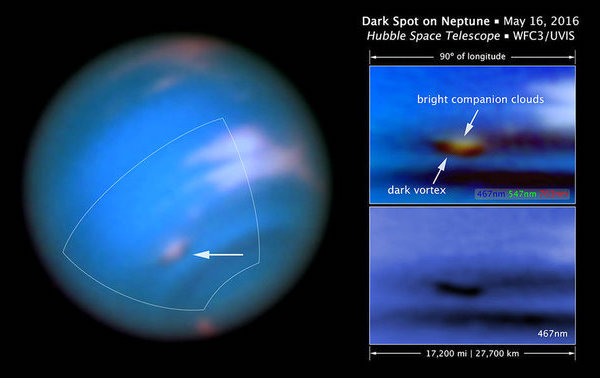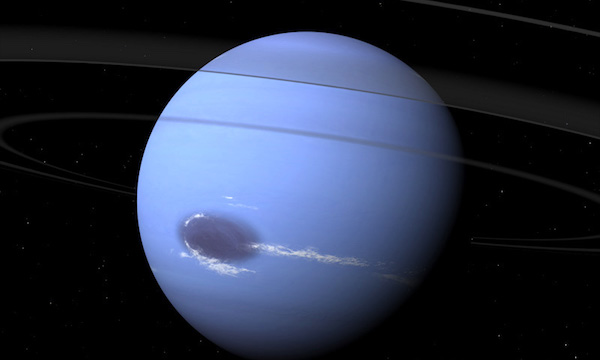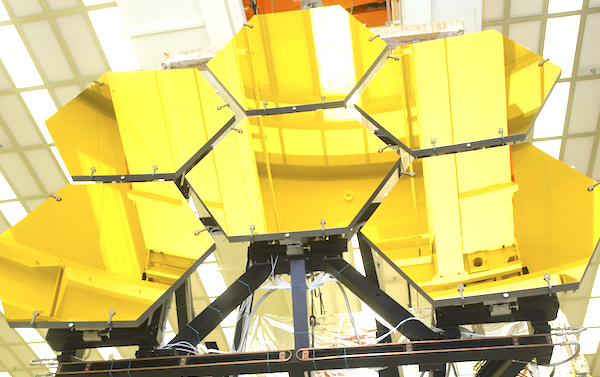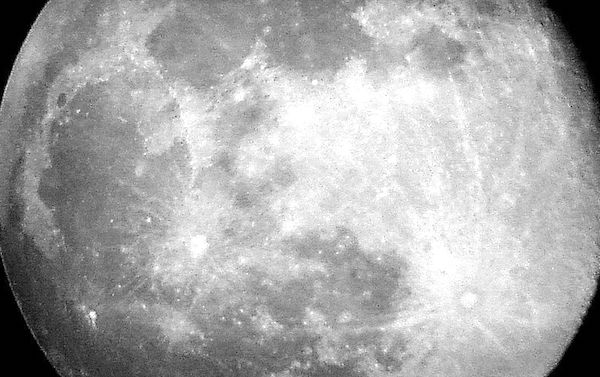Neptune unveiled indications of a “dark vortex” to many observers last summer, and now has NASA responded with an explanation after aiming the Hubble Space Telescope at the feature.
According to NASA, the object on Neptune is a high-pressure system. Because it is accompanied with bright clouds, observers can see them from a telescope. The object is big enough to cover the entire United States, estimated to be around 300 miles across, and is best viewed in blue wavelengths.
Berkeley research astronomer Mike Wong, who analyzed the data from Hubble, issued a new release stating that dark vortices are like gaseous mountains that move through the atmosphere.
“And the companion clouds are similar to so-called orographic clouds that appear as pancake-shaped features lingering over mountains on Earth.”
Dark spots like the vortex have been seen before by astronomers, although they are unusual occurrences. The Voyager spacecraft recorded one in 1989, and the Hubble spotted one in 1994.
Neptune has surprised astronomers with the size of these dark objects as they can change in speed. As a matter of fact, they also come and go during a shorter timeline compared to ones seen on Jupiter, which have storms that last for decades.
According to UC Berkeley student Joshua Tollefsen, astronomers are hoping to understand how dark vortices originate. Scientists are still trying to understand their movement and how they interact with the environment. The atmosphere has active and visible weather patterns with wind speeds as high as 1,300 mph.
Neptune is the fourth-largest planet in the Solar System by diameter and the third-largest by mass. The planet orbits the Sun once every 164.8 years.











